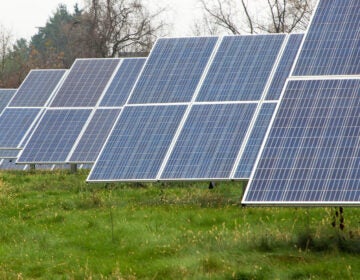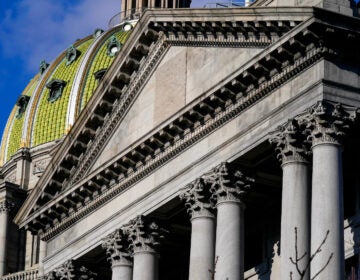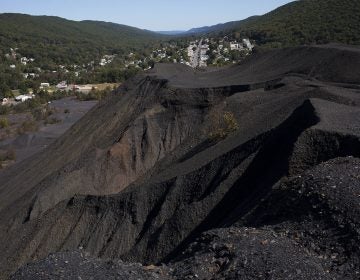Hemp’s looking for a Hail Mary (Jane)
Marijuana’s sober cousin, hemp, may soon become legal again. Scientists and industrialists are figuring out what to do with the super-weed.
Listen 7:42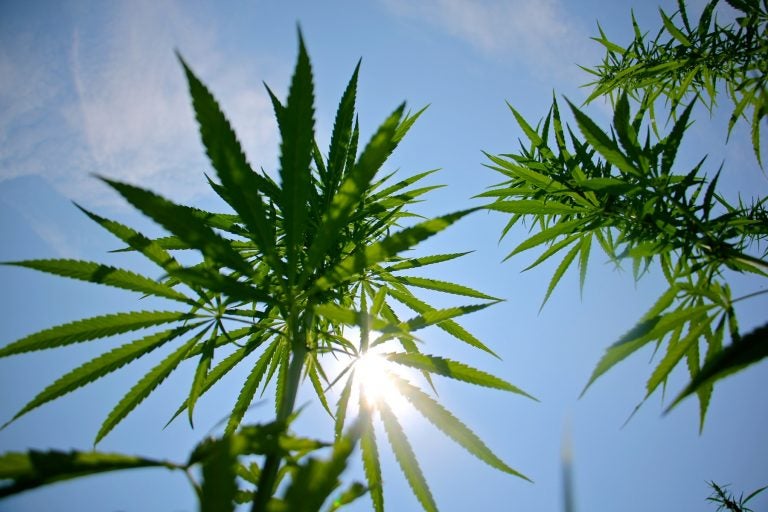
Hemp plants grow in a field near Bethlehem, Pennsylvania. (Emma Lee/WHYY)
Over the last 400 years, farmers in America have had a turbulent relationship with hemp. In the 17th century, they were forced to grow hemp by decree from the British crown because it was so important to England’s textile industry. A few hundred years later, it was outlawed because it too closely resembled its narcotic cousin: marijuana.
Fear of the reefer has ruled hemp agriculture for years, but that’s starting to change. Later this year, when the United States Congress hammers out a new Farm Bill, new rules about industrial hemp will likely be included.
In July, I visited a former cornfield near Bethlehem, Pennsylvania. The old corn stalks were dried out, crispy, still lying on the ground. About a month before, as an experiment, farmers tossed handfuls of hemp seeds randomly around, not even tilling the soil beforehand.
Those seeds grew — like weeds.
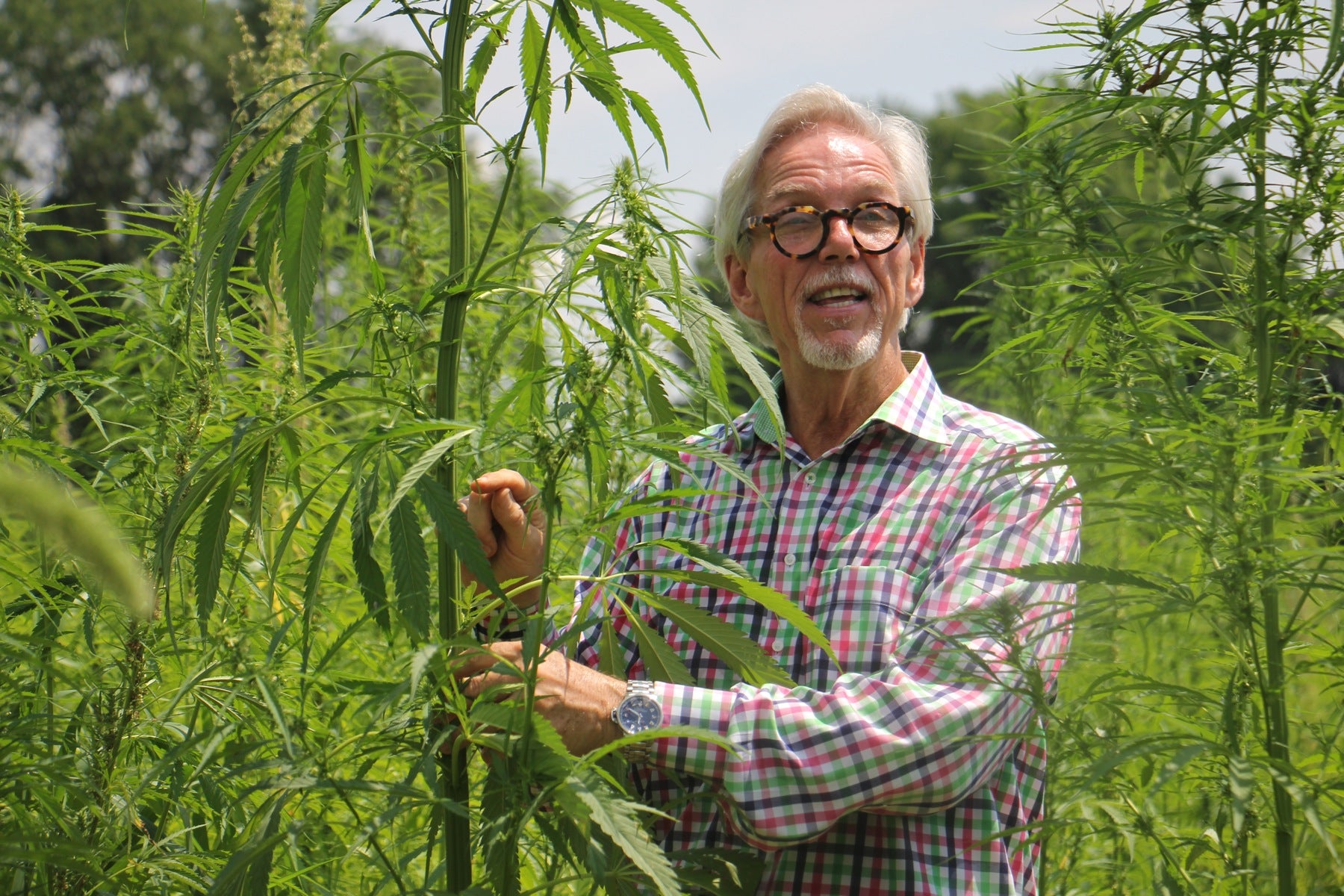
“Most people don’t believe this crop that you’re standing beside can’t be smoked,” said Geoff Whaling, president of the Pennsylvania Hemp Industry Council. “Well, it can be smoked but you wouldn’t get the effects you hoped for. This plants has no THC in it.”
THC is the active psychotropic ingredient in marijuana. It’s the chemical that gets you high. This strain of hemp, called Anka, has little to no THC. Its value lies in its oil, its outer fibers, and its hurd — the woody part of the stem.
“It’s the strongest natural fiber on earth,” said Erica McBride, director of the hemp council. She also joined us in the field.
“Yeah, if you look at this, it’s already …” Whaling snaps a hemp trunk with his hands. “It sounds like wood.”
Although we’re standing in the middle of a 5-acre field of hemp, it doesn’t smell like pot.
“No. It will increase a little over time as it gets closer to maturity and harvest time,” said McBride. “If you take your hand and brush by the flowers, then you can definitely smell that familiar smell. But it’s not overpowering.”
Whaling and McBride are leading a lobbying effort to develop a hemp industry as soon as it is legal and economically viable. Which might be soon: This relatively small field — about the size of four football fields — is part of a pilot program sanctioned by the state to test out hemp as an industrial commodity.
It could be used to make oil, clothing, plastics, concrete — even high-tech medical products. But Whaling says these 5 acres, or 500 acres, or 5,000 aren’t enough.
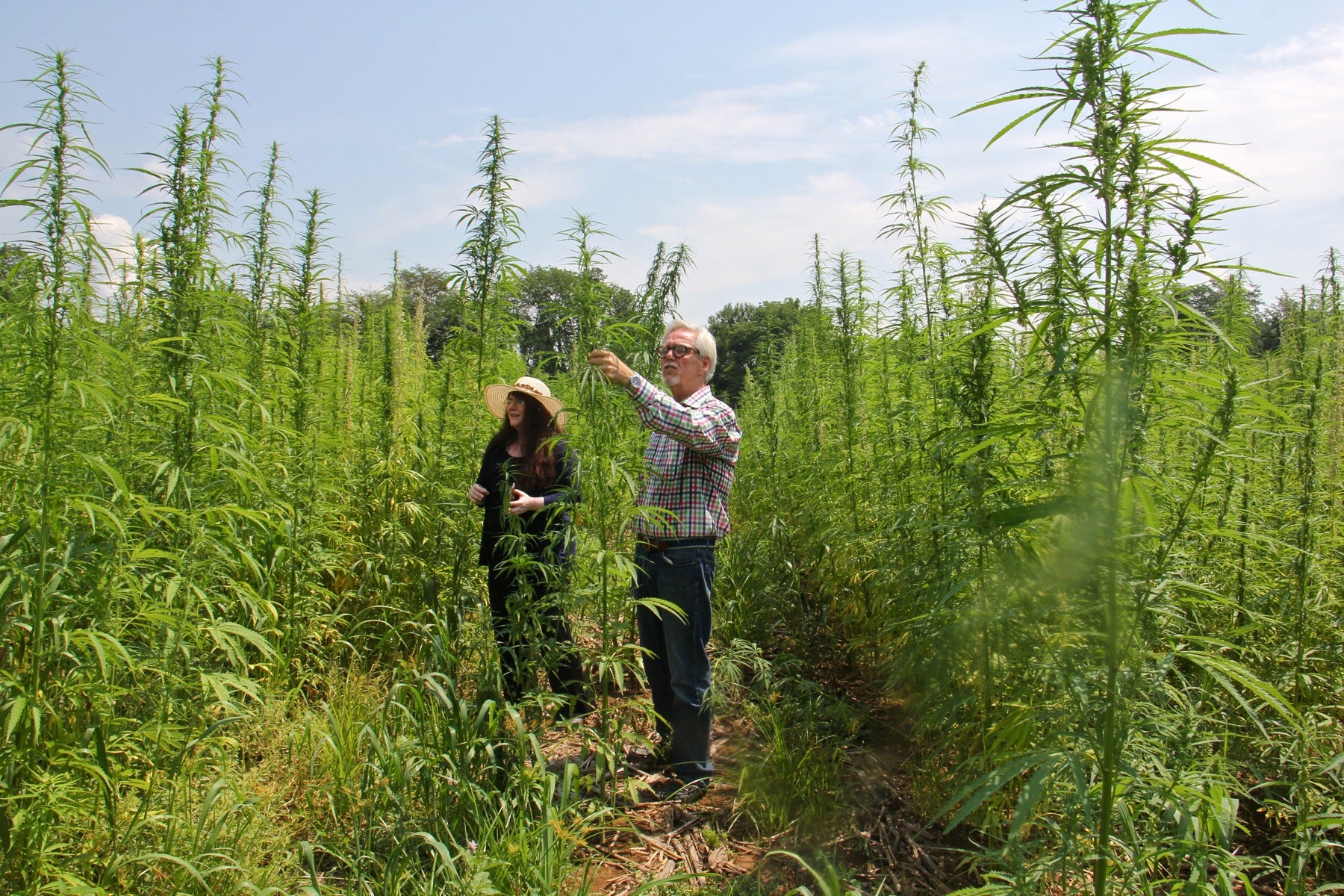
“We have one company in Pennsylvania who said to us they would like to add 5 percent of fiber into their processing of MDF boards and under-laminate flooring,” he said. “Five percent doesn’t sound like a lot, but that translates into 50 tons a day. Their one request is 35,000 acres.”
MDF — or medium-density fibreboard — is an engineered wood product.
If you want to go hemp, you have to go big. The lobbyist are pushing for an entire industrial sector — that means growing, processing, transporting, and manufacturing. It all has to come online at the same time, or it won’t work.
“It’s sort of a chicken and egg scenario,” said McBride. “In order to supply large manufacturing you have to have the acreage, and in order for farmers to be comfortable growing enough acreage they have to be sure there’s a market.”
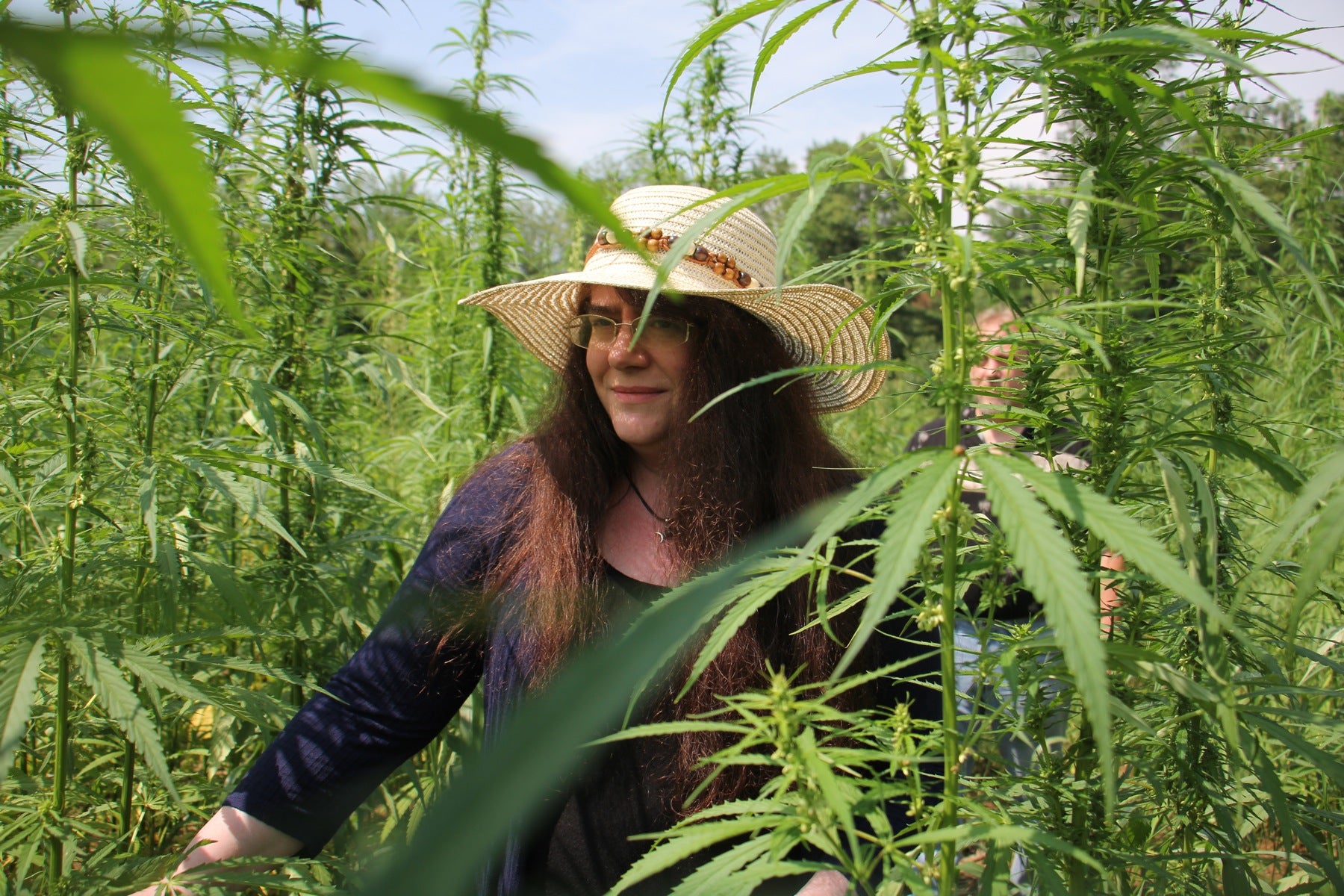
To get there, the hemp council is developing partnerships. One of them is with Jefferson University in Philadelphia, which has a long history in the science of textiles.
“Honestly, I don’t think I’ve ever seen as much compelling upside as this,” said Ron Kander, a materials scientist at Jefferson’s East Falls campus.
“We’re trying to get around the crunchy hippie sweater — that genre of fringe products that’s used by fringe people,” he said. “We’re seeing it as a modern material, advance composite for an aircraft, or an advanced material in a circuit board, or something like that. It’s never been explored.”
Kander is leading about a dozen graduate students to figure out just what the hemp plant can do. For example, it has anti-microbial qualities, so supporters envision using hemp to make artificial arteries and biological stents that the body is less likely to reject.
He said, “There are electrical properties you can get from the material in its carbonized form, once you take it as a biomass — char it down to activated carbon, you could use it as an electrical additive to a material to give it conductivity.”
Another idea is to weave hemp into fabrics containing quantum dots — tiny nanotechnology electrical fields — they could be used to make inexpensive solar panels.
The science is just half of the promise. The other half is the economics. Hemp is cheap, and grows fast and easy. But right now manufacturers throw most of the plant away.
You can already buy one hemp product off the shelf at your local health food store — cannabidiol, or CBD oil. It’s not approved by the U.S. Food and Drug Administration but plenty of people buy it as a supplement for epilepsy, pain, inflammation, and anxiety. CBD is relatively expensive because it is derived from just the hemp flowers, not the stalk or the fibers which make up the bulk of the plant.
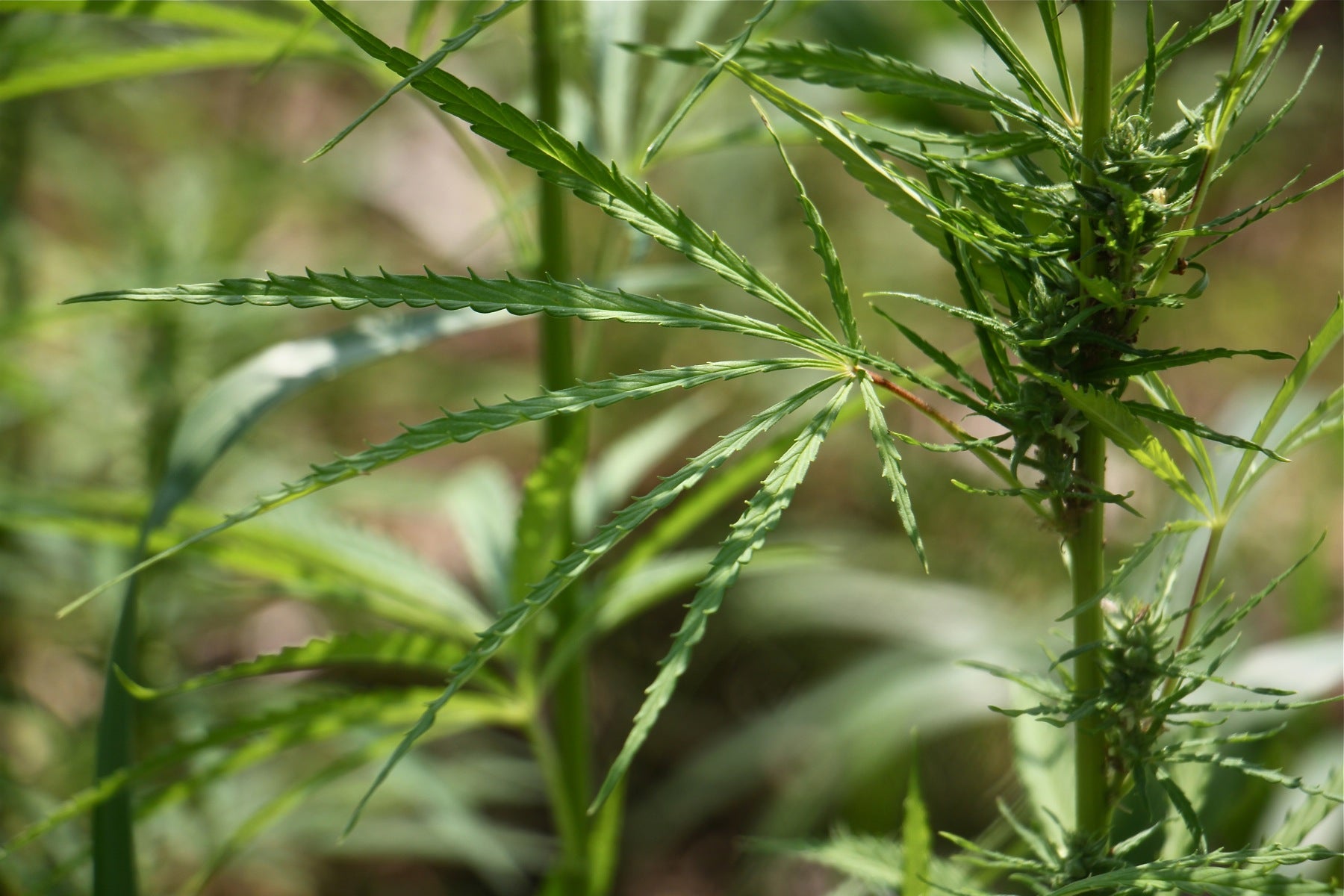
“All the value from the plants has to come from that 15 percent of the plant,” said Kander. “Nobody has gone back and said, take the 85 percent of the plant that’s currently being used for super-exciting applications like … animal bedding. Horses pee on this stuff. That’s what it’s used for.”
If Kander — or some innovative entrepreneur — can figure out how to bring all parts of the hemp plant to market, that could bring down the price. The fibers, the seeds, the flowers will get cheaper, penetrate into a wider variety of products, and be a more attractive crop to farmers. At least that’s the hemp advocates’ dream.
Steve Bevan farms hemp in Kentucky, one of the first states to legalize industrial use of the plant. Since 2014, Kentucky has increasingly expanded the acreage where hemp can be grown.
“The production of tobacco was declining, coal mining in the eastern part of the state was declining,” said Bevan, who is the CEO of GenCanna. “The Kentucky Department of Agriculture was actively pursuing hemp as a way to add a crop that used to grow in great amounts in Kentucky and many other states around. They happened to jump on the hemp bandwagon first.”
Bevan farms hemp exclusively for the production of CBD oil, the highest-value part of the plant. He says he puts the rest of the harvested plants into storage — a huge volume of fiber and stems — waiting for an end-product to arise. Right now there’s nothing else to do with them.
“We’d love to find ways to capitalize on our protein byproducts,” said Bevan. “We’ve spent a lot of time concentrating on our main business, and haven’t given enough attention to other parts of the value chain,” he said.
Apart from the economics and science of hemp, its current legal status is complicated. In the eyes of the federal government, it is seen as a class I drug, just like marijuana. But federal law also allows individual states to grant special permission to farmers to grow it.
Kentucky has taken that step. Pennsylvania is starting to. But many other states have not, and that inconsistency across the country makes life difficult for farmers like Bevan, who have to constantly explain to potential clients, investors, and federal agencies that what he’s doing is legal.
If the upcoming farm bill can take hemp regulation away from the U.S. Drug Enforcement Agency, and give it to the Department of Agriculture, you might be seeing hemp demos at the next farm show, right between the corn dogs and the tractor pulls.
WHYY is your source for fact-based, in-depth journalism and information. As a nonprofit organization, we rely on financial support from readers like you. Please give today.





